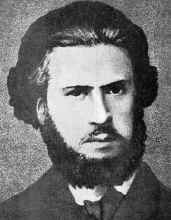Related Research Articles
A journeyman is a worker, skilled in a given building trade or craft, who has successfully completed an official apprenticeship qualification. Journeymen are considered competent and authorized to work in that field as a fully qualified employee. They earn their license by education, supervised experience and examination. Although journeymen have completed a trade certificate and are allowed to work as employees, they may not yet work as self-employed master craftsmen.
Emma Anne Paterson was an English feminist and trade unionist.
The International Typographical Union (ITU) was a US trade union for the printing trade for newspapers and other media. It was founded on May 3, 1852, as the United States as the National Typographical Union, and changed its name to the International Typographical Union at its Albany, New York, convention in 1869 after it began organizing members in Canada. The ITU was one of the first unions to admit female members, admitting women members such as Augusta Lewis, Mary Moore and Eva Howard in 1869.

The National Union of Printing, Bookbinding and Paper Workers (NUPBPW) was a British trade union.
Thomas Joseph Dunning was an English bookbinder and trade unionist.

Eugène Varlin was a French socialist, communard and member of the First International. He was one of the pioneers of French syndicalism.

The cultural and legal framework within which tradesmen contracted for work, and hired men was similar to that of Great Britain. These immigrants quickly sought to establish and regulate the basic institutions of the trades: Friendly societies, the house of call and apprenticeship. Friendly societies were worker controlled mutual insurance organizations. They provided an income in the case of strike, injury or economic downturn. Their association with specific trades also made them useful vehicles for trade union organization.

The London Trades Council (1860–1953) was an early labour organisation, uniting London's trade unionists. Its modern successor organisation is the Greater London Association of Trades (Union) Councils
The Printing Industry Employees' Union of Australia (PIEUA) was an Australian trade union which existed between 1915 and 1966. It represented a range of production and trades workers in the printing industry.

The Felt Hatters' and Trimmers' Unions of Great Britain was a general term for two closely related trade unions representing workers in the hat-making industry in the United Kingdom.
The Vellum Binders' Trade Society was a British trade union formed in 1823, and with a tiny membership representing a small fraction of bookbinders.
The Amalgamated Society of Tailors and Tailoresses (AST&T) was a trade union representing tailors in the United Kingdom.

The Printing and Kindred Trades Federation (P&KTF) was a trade union federation in the United Kingdom.
The National Union of Printing and Paper Workers was a trade union representing workers in the printing industry in the United Kingdom.
The Journeymen Steam Engine, Machine Makers' and Millwrights' Friendly Society, also known as the Old Mechanics, was an early trade union representing engineers in the United Kingdom.
The Irish Bookbinders' and Allied Trades Union was a trade union representing print workers in Ireland.
The National Union of Bookbinders and Machine Rulers was a trade union representing bookbinders and related workers in the United Kingdom.
The Bookbinders and Machine Rulers' Consolidated Union (B&MRCU) was a trade union representing people involved in the manufacturing of books in the United Kingdom.
Henry R. King was a British trade union leader. He was a leading advocate for women's trade unionism who served for many years as treasurer of the London Trades Council.
Edward Ernest Friend, also known as Teddy Friend, was a British trade union leader.